
Calm in Chaos: Creating Refuge Spaces in the Theme Park Setting for People with Autism Spectrum Disorder and Post-Traumatic Stress Disorder
*Corresponding Author(s):
Jeanneane Wood-NartkerDepartment Of Fashion, Interior Design And Merchandising, Central Michigan University, 195 Ojibway Court, Mt. Pleasant, Michigan, United States
Tel:9897745549,
Email:wood1bj@cmich.edu
Abstract
Introduction: Professionals who design themed environments have increasing opportunities to better accommodate the diverse needs of all guests with emphasis on the needs of two groups in particular: guests with autism and PTSD.
Methods: To assist in developing dedicated guidelines for theme parks, a literature review relating these needs to their theme park experience was performed and provided the framework for design criteria which was integrated into one respite space.
Results: Autism is a spectrum where individuals are hyper- and hypo-sensitive to external stimulus, while people with PTSD have diverse triggers. No one space is suitable for all. Therefore, this paper proposes the idea of a new, flexible respite space tailored to the diverse and individual needs of guests visiting a typical theme park. This solution is presented.
Conclusion: Developing places of refuge for these individuals and their families shows rich potential for increasing their enjoyment and time spent in theme parks.
Keywords
Autism; Interior design; PTSD; Refuge; Theme park
INTRODUCTION
For the majority of guests, an average day in a theme park is overall an enjoyable experience with some elements of stress peppered throughout their day. The average cost of a day at a major United States theme park is now over one hundred dollars (USD) per person [1-5], which does not include transportation, lodging, food, and souvenirs. By itself, all of these costs can put a lot of pressure on a family for what may be a once in a lifetime experience. Many guests feel like they need to be able to experience everything in the one day they are at the park. This in combination with large crowds of people can create a stressful experience for anyone.
Now, add on top of that a cognitive disability and the stress can increase exponentially. In other words, individuals with autism, PTSD, and their families have added stressors built into their day. These families are just like other guests in that they want to experience all the park has to offer. They want this to be the best day ever. They want to create meaningful memories with their family. However, unlike neurotypical families, they also must deal with the added stressors that come from living with one of these disorders and from the impact of sensory overload. The overstimulation that exists in theme parks can be challenging to people with autism and PTSD. The crowds while annoying to most, can be overwhelming to these individuals. These added stressors can cause families to leave after only half a day, take an extended break, or deal with unexpected outbursts, all of which may be frustrating at best.
While theme parks currently do provide some accommodations to these guests with disabilities, it is not enough. Much work remains to be done to enhance their overall experience. Recommendations throughout utilize evidence-based design outcomes from the literature review to assist in the design of a respite space to help guests with autism, PTSD, and their families who are visiting a theme park. The need for a calm, restorative environment as a component of their theme park experience has never been clearer. This environment provides a retreat within the theme park itself where families can visit, as desired, throughout the day. The space has controlled access to prevent crowding and accommodates guests’ individual needs through the development of flexible, personalized, and private spaces.
ANALYSIS OF PROBLEM
In 1990, the United States of America passed the Americans with Disabilities Act (ADA) into law. This act gave civil rights protections to individuals with disabilities similar to those provided to individuals on the basis of race, color, gender, national origin, age, and religion. It guaranteed that there would be equal opportunities for people with disabilities in public accommodations, employment, transportation, state and local government services, and telecommunications [6]. Title III relates to public accommodation and describes that all new and remodeled built environments that are open to the public must be built so that they are accessible to people with disabilities. This section also provides minimum design guidelines for the development of accessible designs [7]. The current standards established by the ADA have evolved over time to include many guidelines for people with physical disabilities. However, the current standards do not address the needs of cognitive/psychological disabilities, such as autism and PTSD [6].
Autism
Autism was first recognized as a developmental disorder by Dr. Leo Kanner in 1943. At first, autism was equated to childhood schizophrenia. However, after further research, Dr. Kanner refined his understanding of autism, which has formed the basis of our modern understanding of autism today [8]. Autism Spectrum Disorder (ASD) is defined as “a condition related to brain development that impacts how a person perceives and socializes with others, often causing problems in social interaction and communication. The disorder also frequently includes limited and repetitive patterns of behaviour. The term “spectrum” in autism spectrum disorder refers to the wide range of symptoms and severity” [9]. In the United States, autism currently affects one in sixty-eight births [10]. People affected by autism often have trouble with sensory sensitivity, including visual, auditory, tactile, proprioceptive, gustatory, and olfactory stimuli [11]. In addition, nearly 90 percent of those people with autism have sensory conditions that can be characterized as hypersensitivity, hyposensitivity, or unresponsiveness [12].
Post-Traumatic stress disorder
Post-Traumatic Stress Disorder (PTSD) is defined by Mayo Clinic as “a mental health condition that’s triggered by a terrifying event - either experiencing it or witnessing it. Symptoms may include flashbacks, nightmares and severe anxiety, as well as uncontrollable thoughts about the event” [13]. “The most common traumatic events experienced by individuals [who are] not in war zones include rape, childhood neglect, childhood physical abuse, and being threatened with a weapon” [14]. Academic research about PTSD is in its infancy compared with many other psychological disorders because it only became a recognized diagnosis in 1980. Recent studies show that twenty to thirty percent of veterans returning from war zones in Iraq and Afghanistan end up being diagnosed with PTSD [15].
Often people with PTSD struggle with infractions on their perceived personal space. In western culture, it is accepted that there are three levels of interpersonal spatial zones. These include the “intimate zone” ranging from zero to 45.72 centimetres from a person’s body, the “personal zone” ranging from 45.72 centimetres to 1.22 meters, and a “social zone” which extends from 1.22 to 3.66 meters. The intimate space is commonly reserved for family and loved ones. The personal zone marks the space that people use for conversations with acquaintances, and the social zone is used for conversations with strangers and in formal situations [16]. However, these zones vary in size by culture, and for people with PTSD often extend beyond the typical distance. Typical stress triggers of people with PTSD include crowding of personal space as well as large crowds, which are normal in theme parks [17].
Initial concept ideation
The idea for this topic originated from personal observations as a cast member at Walt Disney World Resort and experiences as the daughter of a military veteran with PTSD. My family has been visiting theme parks together since I was four years old. All of us have many fond memories of exploring themed lands and experiencing new stories together. However, when I was in high school, my father was recalled to active duty service with the United States Army in the Middle East. He returned home from this deployment as an honourably discharged wounded veteran with PTSD from his multiple active duty tours. He continues to enjoy theme parks, but he needs to leave around the half-day point due to stress of over-stimulation and crowding. It bothers him that he cannot enjoy the park with the rest of the family for the whole day, but due to his PTSD he cannot stay in such an over stimulating, crowded environment for more than a few hours at a time. He also has developed an increased anxiety with the sound of fireworks, which used to be one of his favourite parts of the theme park experience.
Throughout my time as an attraction attendant at Disney World’s Magic Kingdom, I encountered many families who had members of their party that had autism and/or PTSD. The highly themed, multisensory environment of theme parks can be over-stimulating and frustrating to these guests. Like my father, many of these families needed to leave the park midday. Some choose to remain in the park half the day, while others take an extended break back at the hotel, which often requires a minimum time of four hours away from the park including travel time. Often, I witnessed various coping techniques by these guests and some outbursts as well.
One of my most vivid experiences from my time as a cast member was when I was working in the area of the Mad Tea Party spinning teacup attraction. An adult guest with autism started having an outburst. Unfortunately, he became violent towards a family member and the Orange County Sheriff’s department had to be called to the scene. He ended up being forcibly strapped to a gurney and handcuffed after his violence caused injury. It was evident that his emotional condition led to the episode, but park regulations required intervention. The family was taken back stage to escort their son to the nearest hospital. The thought that kept going through my mind was, ‘What could we have done differently to prevent this? What can we do to help prevent this type of situation in the future?’ As a designer, is there something I can do to help these communities? Is there a way I can increase awareness, add to the existing accommodations, and create a new way to help them cope with the stresses of theme parks? These are the questions I ask myself now, and will answer in the following text.
MATERIALS AND METHODS
Current accommodations in theme parks
To some extent, the theme park industry as a whole does cater to people with disabilities. Many parks have a disability rider access program that allows guests with disabilities access to use a special queue when waiting for an attraction. For example, at Walt Disney World Resort, after a guest with disabilities is enrolled in their Disability Access Service (DAS) program by guest services, that guest and their family can go to the entrance of an attraction they wish to experience and receive a return time for the attraction. This return time is assigned based on the current regular wait time minus ten minutes. At the prearranged time, the guest and their family can return to use the Fastpass line to enter the attraction. SeaWorld, Legoland, Busch Gardens, and Universal Theme Parks offer similar disability rider access programs that mirror this system with minor variations [18].
Other park accommodations for guests with disabilities include allowance for service animals and special parade/night time spectacular viewing. However, these special viewing areas are often limited in space and are only for guests confined to wheelchairs. A few theme parks have started to offer quiet rooms for guests with autism including Legoland branded parks, Sesame Place, Sea World Orlando, Aquatica Orlando, and Discovery Cove Orlando. However, these quiet rooms were often not purpose built and were created from existing unused offices [19,20] (Figure 1).
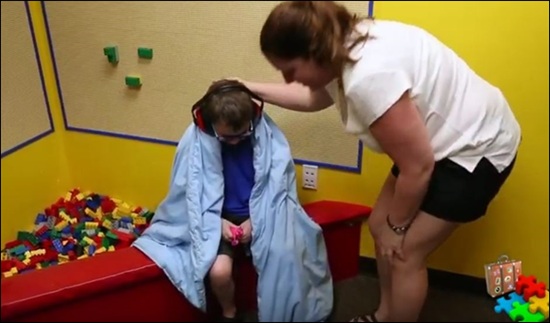
Figure 1: Quiet room at legoland florida [20].
Within the past year Sesame Place, Sea World Orlando, Aquatica Orlando, and Discovery Cove Orlando have become Certified Autism Centers through the International Board of Credentialing and Continuing Education Standards (IBCCES). According to IBCCES’s website, to be a Certified Autism Center, a location must be dedicated to serving individuals with autism; with at least 80% of staff trained and certified in the field of autism, and be committed to ongoing training in autism [21]. A result of this certification is the development of sensory guides to the park’s attractions that describe what the guest will experience at each location. The document is published online. This certification standard is an effective way to raise awareness and understanding in the theme park’s staff; however, it is limited in that it does not require any specific services to be offered to affected guests and their families, or offer any revised physical design guidelines to achieve certification.
Sesame Place was the first theme park to be certified as a Certified Autism Center and has gone above and beyond to create an enjoyable experience for its guests with autism. In addition to the previously stated accommodations, this park also offers rentals of noise-cancelling headphones, low sensory areas within the park, low sensory parade viewing, and accommodations for special food sensitivities. While visiting the park, guests can also meet Julia, a newly introduced recurring character on the children’s television show Sesame Street. Julia is described as “a sweet and curious 4-year-old with autism” [19].
As inferred from the above statements, the theme park industry does accommodate guests through the use of administrative policies and accessibility programs. Some parks are beginning to realize the value of moving beyond policies to physically having a quiet, relaxing space for guests with cognitive disabilities. However, there are still no dedicated guidelines for these spaces or general design guides for the development of these environments within theme parks. Much work remains to be done.
Autism spectrum disorder in theme parks
In reference to her work with The Walters Art Museum, Hosler [22] notes that families with members who are autistic “often stay away from museums and other similar places because of the judgement and negativity of other patrons and staff, which can be exhausting and upsetting” and that “the potential for added stress and grave discomfort faced by families with ASD or Sensory Processing Disorders (SPD) is enough to isolate these populations”. At best, people with sensory processing disorders, including autism, can find most environments built for neurotypical individuals distracting and frightening; this includes theme parks. For guests with autism, theme parks can be an explosion of input that comes too fast and too frequent to be easily processed. Figure 2 illustrates an example of this sensory overload with potential triggers [23]. People with ASD often are unable to use all five senses at once and commonly have sensory overload when attempting to use more than one sense at a time [24]. There are currently few low sensory, low traffic areas within theme park for guests with autism to find refuge. The Planning a trip to the Walt Disney World Resort: A Resource for Guests with Cognitive Disabilities including Autism Spectrum Disorder (ASD) suggests guests can find quiet areas in the Magic Kingdom at Pete’s Silly Sideshow and near Walt Disney’s Carousel of Progress [25]. However, both of these locations are home to character dance parties throughout the day and guests unfamiliar with the park schedule could be in for an unwelcome surprise. This, in combination with the stares of other guests who do not understand the special cognitive needs of someone with autism, can make theme parks and other entertainment venues a minefield.
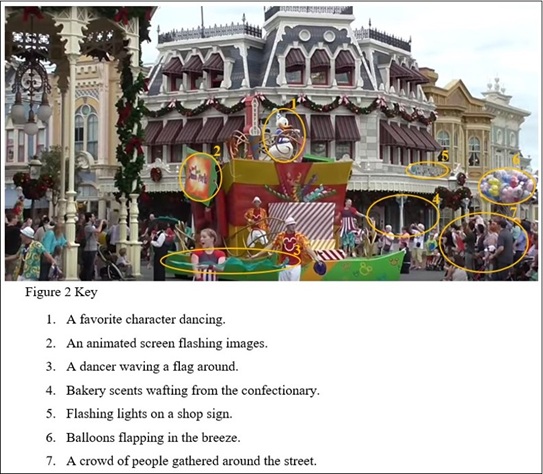
Figure 2: Move It! Shake It! Dance and play It! Street party at magic kingdom park [23].
Post-Traumatic stress disorder in theme parks
Theme parks can be very crowded. Even a neurotypical guest will acknowledge that fact. For guests with PTSD, this issue is an obstacle that they must work to overcome. There is a consistent lack of personal space throughout theme parks ranging from the attraction queues, to the restaurants, to watching fireworks at the end of the day. Examples of these potential triggers are shown in figure 3 [26]. What appears to be a quiet uncrowded area one minute can suddenly have an unannounced brass band performance the next. While most guests would view this as a happy surprise, guests with PTSD may find the sudden loud noise and gathering crowd to be a trigger. Fireworks can also be a trigger, especially for war veterans with PTSD. Unfortunately, regardless of the size of the theme park, there are few places where guests can escape the loud explosions.
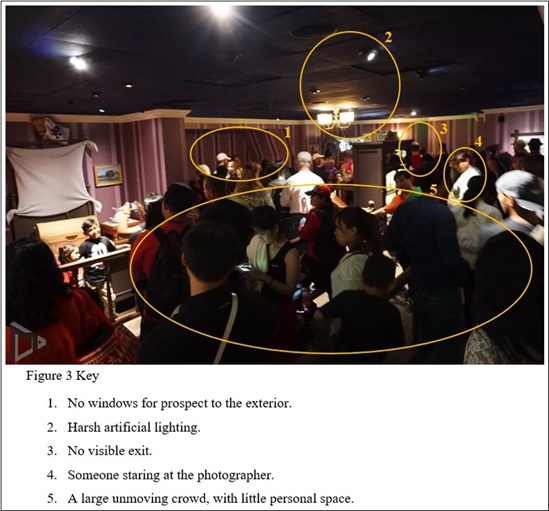
Figure 3: Queue for Peter pan’s flight attraction at magic kingdom park [26].
Design psychology and theory
Prospect-refuge theory states that humans feel comforted and pleased when the space they inhabit has both a sense of enclosure and has views outside of the immediate space [9]. Utilizing this principle when designing three-dimensional space can add to guest comfort and relaxation. Appleton first proposed this theory in 1975 as a way of explaining why people prefer some landscapes over others. Hildebrand further expanded the theory when applied to spatial design, including “four additional spatio-cognitive elements: mystery, complexity, enticement and illumination.” Since then, multiple researchers in the interior design and architecture fields have further refined the definition. The current thoughts on prospect-refuge theory state that a preferable environment consists of four components: the space has a view, the view must be partially or fully framed, the view has visual complexity that increases the sense of safety, and the view has a sense of mystery [27]. Providing opportunities to view into spaces before entering (prospect) allows guests to feel they are still a part of the larger space, while refuge allows them to feel protected and secure. These feelings of inclusion and protection are desired by people with autism and PTSD and can aid in creating a sense of relaxation.
There are many characteristics that factor into the creation of a relaxing, calm space. One of the main features involves creating a sense of control for the user. According to Augustin [16], control over spaces is comforting, especially a person’s ability to change the physical space, and being able to control the access into a space by others. Control over access to a space and being able to control who and how people interact with one another is a type of privacy. According to Rapoport [28], privacy is the ability to control visual, auditory, and olfactory interactions with other people. Although a sense of privacy is not a feeling that is often associated with being in a theme park, this sense of privacy and control is important to those with autism and PTSD. Therefore, creating opportunities for privacy can provide a heightened sense of comfort and wellbeing throughout their day.
As previously mentioned, a day at a theme park can be a chaotic sensory overload for neurotypical guests, and for people with autism and PTSD, this feeling can be amplified. The story that guests are immersed in throughout a theme park offers highs and lows in the story’s narrative. However, there is often little to no relief from the multitude of thematic elements. Creating low points in the volume and intensity of sensory input could greatly benefit both of these populations. Utilizing calming sensory input will increase guests’ comfort.
One feature that the design and architectural community can become sensitive to in regard to sensory input is color. Color is the first feature that humans notice when entering a space. It has been shown that bright, saturated colors improve mood and that cool hues are calming. For example, the specific shade of Pepto-Bismol pink has been shown to reduce anxiety, because it is a bright but unsaturated color [16]. Shades of blue can cause body temperature and pulse rate to lower [29]. Spaces with variations of the same hue are calming as well, unless they are variations of white or beige. People generally also expect and are comforted by darker floors, mid-tone walls, and lighter ceilings [16].
Besides affecting how a color is perceived by the human eye, the type of lighting used can also affect a person’s mood. A warmer light source in the 2,500-3,000 Kelvin range has been shown to be relaxing [16]. Natural daylight has a greater beneficial effect than artificial light for stress reduction, cognitive performance, and attitude improvement [30]. When access to natural light and nature are not possible, video images have been shown to help create mental comfort. The most desired types of views are an exterior natural environment with clearly defined paths and some evidence of human tending [16]. These types of views can help to create a relaxing environment in an otherwise sterile feeling environment.
Another way to create a calm atmosphere is through use of specific types of audio input. Relaxation through audio input can be achieved through use of middle pitch instruments such as harps and acoustic guitars. Research has shown that slow music without words can reduce stress, while music with words is more distracting and requires more concentration. Predictable rhythms are also relaxing with fifty to seventy beats per minute considered moderately relaxing and thirty to fifty beats per minute deeply relaxing. White noise is often specified to create relaxation by creating background noise that is a similar decibel level to other nearby noises that might otherwise become a distraction [16].
Creating a relaxing environment for people with autism and PTSD within the theme park setting is one way to provide comfort to these guests. However, this space should be restorative in addition to being relaxing in order to be considered a true success. These guests need a calming environment that can soothe them while restoring their mental bank and preparing them to return to the day’s activities of the theme park.
Kaplan [31] states there are four characteristics of restorative spaces. These include 1) the feeling of being away, 2) the sense of being fascinating, 3) the ability to visit easily, and 4) the ability to do what we are trying to do with ease. The first characteristic involves a feeling of being away, which means that designers must be sensitive to creating spaces that are remote from the over-stimulating exhausting areas of the park. The second characteristic that should be incorporated into a restorative space is the inclusion of spaces that are fascinating. This means that the design and architectural community needs to design environments that are easy and pleasurable to think about. The third characteristic to be integrated into restorative spaces is that it must be easy to visit. This is multifaceted in that it should be conveniently located but should also possess a feeling of safety and the development of positive emotions. The fourth characteristic important to the creation of a restorative space is that the space should be functional to make it easy to do what needs to be done. The people inhabiting the space need to be able to easily anticipate what will happen there through features such as easily understood signage and visual cues [16].
When exposed to a restorative environment, a person can start experiencing relaxation in as little as three to five minutes. It is important that these spaces are pleasantly distracting and easy to understand [16]. Incorporating these characteristics will assist in restoring the guests within the environment to be prepared to return to the high stimulus theme park.
DESIGNING FOR SPECIAL NEEDS
When designing with sensitivity to people with autism and PTSD, there are a number of special design considerations that should be taken into account. One of the most important is the use of transition spaces. Mcallister [11] notes in her study of school design that “a buffer between the calm of class and turbulent world of hall, corridor and playground is needed. Therefore, an area for the pupil to prepare for transition to and from the quieter classroom environment is advantageous. People with autism often will enter spaces cautiously and look for ways to achieve privacy. Often they will stand or sit in locations that hug the wall [24]. Visual access between spaces allows for preview and assessment of the space before entering [12]. Ghazali [10] also states that “grouping spaces into ‘high-stimulus’ and ‘low-stimulus’ areas with transition zones aiding the shift from one zone to the next” is helpful for people with autism.
In general, when designing for people with autism, hallways, ceilings, and rooms need to be larger than average to minimize self-harm and property damage [12]. Since people with autism tend to focus on the floor, flooring should clearly delineate transitions between separate spaces and should not have complex patterns. Vaulted ceilings create a sense of uplift and can help to break the habit of looking down at the ground. “Most people with ASD perceive their surroundings in pieces rather than as a whole” [24]. Due to this, large spaces should be broken up into smaller areas and fixtures and furnishings should be grouped to form a whole. Visual organization also needs to be maximized in order to clarify what is expected within a specific space [32]. These visual structure elements can include color coding, written signage, pictographic signage, and numbering. Additionally, a secure space increases the comfort level of caregivers to encourage people with autism to explore on their own [24].
In a survey of teachers and parents with children who have autism, light was identified as the most important consideration when designing a pleasant space for an individual with autism. It should be natural when at all possible, and when not available should be able to be dimmed with a diffuser to reduce lamp flickering. Outside noise and background “white noise” should also be minimized as much as possible [33]. Auditory sensitivity occurs in a large percentage of people with autism, and echoes are often cited as a source of irritation [24]. Earth tones and calm patterns minimize feelings of overstimulation [33]. Textiles made from organic cotton and bamboo also have been shown to be favored by people with autism [24].
“It is also important to provide “quiet rooms” where a person having a tantrum-or simply experiencing too much stress due to sensory overload, for example can calm” [32]. Having an escape or quiet room has been shown to reduce disruptive behaviours and tantrums in people with ASD. Many people with autism “reported feeling a sense of control and release when they had a dedicated space for relaxation”. These quiet rooms should have minimal sensory impact that incorporates few colors, minimal furnishings, soft textures, and low lighting. These quiet rooms can help an individual with autism self-soothe and re-center themselves in addition to being calming [24].
Another environment that can be calming for someone with autism is a garden. A well-designed garden can enhance focus and attention and reduce anxiety. Access to nature has been shown to be restorative and improves cognitive function as well. A garden designed for people with autism should facilitate a range of experiences, various seating options, areas for gross motor activities, and sensory input [12]. Those with hypersensitivity to movement may feel comforted by a cocooning element like a swing, hammock, or canopy of tree limbs [24]. However, elements that are easily ingested, especially toxic plants should be avoided [34].
Individuals with PTSD also find nature and gardens to be relaxing. Veterans with PTSD exposed to nature-based therapy felt calmer, more in control, and better able to connect with their families [35].
One of the main items of importance to people with PTSD is always having a situational awareness of their surroundings and the people near them. When designing for people with PTSD, sightlines are therefore a major consideration. Glass doors, sidelights, and/or half walls are preferred to give visibility into a space before entering, similar to what has been recommended through the prospect-refuge theory [36]. When dividing a larger space into zones, half walls should be used instead of full height walls, and partitions that allow the viewer to look through to avoid blind spots are recommended. Knowing where the exits are located and having multiple ways to escape is important to people with PTSD. “Veterans with acute PTSD avoid communal spaces with fewer than two visible exits, because of combat training and experiences” [15]. The ability to constantly surveil the space they occupy and the other people inhabiting the space is important to these individuals.
A potential trigger to guests with PTSD is having seating located where the back of the chair is adjacent to pedestrian traffic due to the blind spot this creates [15]. Public seating areas should always be oriented to provide views of the exits. Increasing the distance between seating units is comforting for people with PTSD because it allows for an easier escape and reduces the social pressure to interact with others [17].
People with PTSD have been shown to prefer circular over square layouts, due to the lack of corners [17]. Corridors with high ceilings have been shown to minimize stress. Since noise has been cited as a common trigger of stress, it is recommended to “provide acoustic mitigation in communal spaces so that noise levels do not trigger adverse reactions.” Interior spaces should be well lit with a combination of natural and artificial sources. However, “glare exacerbates stress for veterans with disabilities or suffering from PTSD” [15]. Due to these concerns, when designing for people with PTSD, it is desirable to have light sources that provide high footcandles with low levels of glare.
IMPACT OF RESEARCH ON EVOLUTION OF CONCEPT
The literature relating the needs of people with autism spectrum disorder and PTSD to their theme park experience clarifies more than ever that their encounters can be improved through thoughtful design and can universally benefit both communities through the development of flexible, personalized, and private spaces. Table 1 summarizes into one place the recommendations from the literature review, which was beneficial in preparing the new, flexible solution tailored to the diverse needs of guests.
|
PTSD |
|
Environments for people with PTSD should: · Provide situational awareness of their surroundings and the people near them [17]. · Provide clear sightlines through materials such as glass doors, sidelights, and/or half walls to give visibility into a space before entering [17]. · Clearly show the location of exits [15]. · Provide multiple ways to exit a space [15]. · Provide public seating areas that afford views of the exits [15]. · Provide seating arrangements with an increased social distance between groupings to allow for an easier escape and reduce the social pressure to interact with others [17]. · Provide circular room shapes over square layouts, to minimize the number of corners [17]. · Provide corridors with high ceilings [15]. · Provide acoustic mitigation in communal spaces so that noise levels do not trigger adverse reactions [15]. · Provide well-lit interior spaces that have a combination of natural and artificial sources [15]. However, glare intensifies stress for veterans with disabilities or suffering from PTSD so it is desirable to have light sources that provide high footcandles with low levels of glare [15]. · Promote access to nature and gardens [35]. · Use signage with numbering systems to locate rooms [17]. |
|
Autism Spectrum Disorder |
|
Environments for people on the autism spectrum should: · Provide an escape or quiet room so a person can calm to reduce disruptive behaviors and tantrums [32] that incorporate few colors, minimal furnishings, soft textures, and low lighting [24]. · Provide materials in earth tones and/or cool color hues, e.g., soft blue, green or tan [29,33] and calm patterns [33]. · Provide textiles made from natural materials, e.g., organic cotton and bamboo [24]. · Support a hierarchy of colors, e.g., darker floors, mid-tone walls, and lighter ceilings [16]. · Provide warmer light sources in the 2,500-3,000 Kelvin range [16]. · Provide increased use of natural daylight over artificial light for stress reduction, cognitive performance, and attitude improvement [30,33]. When natural light is not available, lighting should be dimmable with a diffuser to reduce lamp flickering [33]. · Provide views to exterior natural environments with clearly defined paths and some evidence of human tending [16]. · Provide access to nature [12]. · Provide access to a garden that facilitates a range of experiences, various seating options, areas for gross motor activities, and sensory input [12]. Those people with hypersensitivity to movement may feel comforted by a cocooning element like a swing, hammock, or canopy of tree limbs [24]. However, elements that are easily ingested, especially toxic plants should be avoided [34]. · Provide auditory sources e.g., background music and white noise, that are a similar decibel level to other nearby sounds that might otherwise become a distraction [16,33]. · Provide slow music without words, e.g., guitar or harp to create a relaxing atmosphere [16]. · Provide materials that minimize echo [24]. · Provide a retreat space within the theme park itself where families can visit as desired throughout the day [32]. · Provide visual access between spaces to allow the opportunity to preview and assess the surrounding area prior to entering [12]. · Aid in the transition to and from quiet environments [24,11]. · Provide grouped spaces that are designated ‘high-stimulus’ and ‘low-stimulus’ areas with transition zones aiding the shift from one zone to the next [10]. · Provide controlled access to prevent crowding [17]. · Create opportunities for privacy [11,28]. · Create an atmosphere of relaxation [24]. · Provide hallways, ceilings, and rooms that are larger than average to minimize self-harm and property damage [12]. · Provide vaulted ceilings to create a sense of uplift and to help break the habit of looking down at the ground [24]. · Delineate clear flooring transitions between separate spaces and eliminate complex patterns [24]. · Divide large spaces into smaller areas and group furnishings to form a whole [24]. · Provide maximum visual organization to clarify what is expected within a specific space, e.g., color coding, written signage, pictographic signage, and numbering [32]. · Create secure spaces, which increase the comfort level of caregivers to encourage people with autism to explore on their own [24]. |
Table 1: Environmental recommendations for people with PTSD and autism spectrum disorder.
Developing places of refuge for these individuals and their families shows rich potential for increasing their enjoyment and time spent in theme parks. Since autism is a spectrum where one individual will find a stimulus soothing while another may find it stress inducing, and people with PTSD have diverse triggers, no one space will be suitable for all. While theme parks currently do provide some accommodations for these guests, it is not enough. Much work remains to be done to enhance their overall experience.
RESULTS
Proposed design
The following section describes a proposed design-based solution that could be added to an existing theme park or included in the plans for a new park. This design will give guests with autism, PTSD, and their families a safe, calm place within the theme park they can retreat to throughout the day as needed. The space will feature three main areas: a semi-public interior garden [12,34,35], private room that can be adjusted to the needs of each individual [32] and alternate viewing locations for fireworks and night-time spectaculars [15,16,24,33]. This flexible design will help these individuals have a more enjoyable, less stressful theme park experience.
When creating the proposed design, there were five main design considerations to increase guest comfort. These include: accessibility, choice, nature, prospect-refuge theory, and privacy. ADA accessibility guidelines were emphasized throughout the design process. The final design often exceeds the minimum guidelines with the knowledge that a greater percentage of the population inhabiting the space will require these features. The pathways are all at least 1.52 meters wide, often widening to 2.44 meters. All restrooms are fully accessible, lessening the need to locate an accessible water closet. Doorways have been increased to 106.68 centimetres instead of the standard 91.44 centimetres. Two freight-size elevators are also used in the space to allow for greater ease of mobility of multiple groups with wheelchairs but also the increased space needed by some people with autism and PTSD.
Hosler [22] states that, “because preferences vary by individual, the opportunity for choice is fundamental to the success of accessible programming”. Multiple options allow the guests to feel more in control of their space. This provides them a greater sense of self and can aid in relaxation. Throughout the design, multiple seating options are provided to account for individual preference.
Nature is also emphasized throughout the design due to its calming influence on the psyche. Natural light is used as much as possible throughout the space. Given that this space would most likely back into an un-picturesque back of house service area, skylights were used instead of traditional windows to maximize available natural light. The main interior garden space is covered by a massive skylight and allows guests to look outside. This sunlight is diffused into the adjacent spaces through translucent materials like fish tanks and acrylic panels. Live plants are used throughout the garden to enhance the environment. Natural wood tones and finishes in blues and greens also reinforce a sense of nature throughout the space.
The design utilizes prospect-refuge theory to enhance guest comfort and integrates numerous design features identified in the literature review. Throughout the interior garden, the use of raised planter beds and partial slat walls allow for a sense of enclosure while still allowing for unobscured sight lines. The reception area allows for partial views into the garden through the use of an acrylic panel embedded with grass. Aquariums allow for natural light and sightlines into the vestibules leading to the private rooms. The doors into the private rooms have an embedded sidelight allowing views into and out of the space, while an embedded window shade allows for control of privacy.
Privacy is the last major design consideration. The main garden’s use of garden beds and slat walls allows for increased privacy among the various seat groupings. These elements both obscure views into the space and due to their soft surfaces reduce the passage of noise throughout the space. To increase audio privacy, wall thickness was increased from the typical 15.24 centimetres to 30.48 centimetres to provide additional barriers to sound. The use of sound absorbing materials is also prevalent. Permeable pavers, faux grass in the garden, carpeting, and upholstered furniture all contribute to audible privacy through sound absorption.
Exterior
The exterior of the proposed space will be mainly hidden in a back of house area and require little theming, except for the front façade. The façade can be themed to fit into a multitude of story lines and is meant to unobtrusively exist within a pre-existing theme. With only two doors in the front façade, one of which is an emergency exit, the façade can easily be themed through the use of flats and applied surface work. The second floor fireworks viewing area is set back to obscure sightlines into the space and better help the façade blend into the surrounding environment.
Reception
When guests enter the space, they will be greeted by a warm reception room. This reception space will serve as a transition between the highly themed environment outside and the calm interior space. The team member at the desk will check them in and provide an overview of the space and the available amenities. If the guest desires to use a private room as part of their visit, the team member will also provide them with their room number and the tablet to control the various features within it.
The large wooden reception desk anchors the space. It is highlighted through the use of a teal hue on the half wall behind it. An architectural acrylic resin panel embedded with natural elements allows for partial views into the interior garden, as shown by reference number one from Figure 4, reinforcing the feelings of prospect and refuge.
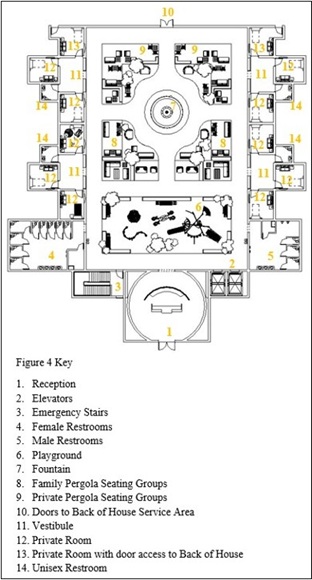
Figure 4: Level 1 floor plan.
Interior garden
Once guests pass through the reception, they enter a lush interior courtyard topped by a massive skylight, as shown in Figure 4. The section closest to the reception contains a small play area for children to release excess energy and is bordered by the main restrooms for the space. The playground area contains four play elements bordered by raised planter beds. The main component is a small play structure with a slide, Wobble Bridge, and steppers. There is an accessible seesaw-like element, a climbable dome, and an accessible sensory panel system. These elements provide multiple experiences and stimulate various senses depending on the play element and the stimulus needs of the guests. There are also multiple opportunities to crawl into a small enclosed space that some children find comforting. Also nearby are the elevators to take guests to the fireworks’ viewing areas and emergency stairs.
Once guests pass the playground, they move into seating areas covered by pergolas and are surrounded by lush green vegetation. The use of plants has been shown to improve the moods of people who inhabit the space. These seating groups circle a large fountain that anchors the garden and provides a relaxing element to view.
The seating around the fountain is divided into four areas through the use of shading pergolas and changes in flooring finishes, as shown in Figure 5. The two sections closest to the play area contain swing elements and larger seating combinations for larger families. The two seating layouts along the back wall have smaller groupings and more planters and slat walls for privacy. All of the seating areas include multiple types of seating including club chairs, sofas, rockers, and daybeds. A sense of privacy is achieved through raised garden beds, creeping vines, and slat wall dividers. These screening elements provide privacy while still maintaining sightlines. The seating configuration also includes empty space so that guests in wheelchairs can easily engage with the rest of their group and fully enjoy this space.
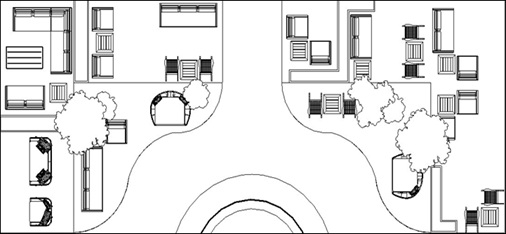
Figure 5: Pergola seating detail plan.
Private rooms
In this design, there are twelve private rooms divided into four pods containing an accessible restroom and three rooms each. A vestibule off the interior garden serves as a transition space between the two zones. To add an aspect of nature and increase natural light, fish tanks penetrate the wall dividing the vestibule and the garden. Fish tanks can reduce stress and these aquariums effectively demonstrate the application of prospect and refuge in addition to encouraging positive anticipation, since they provide partial views into and out of the space. Sidelights within the doors into the private rooms also allow for prospect into the rooms themselves. These doors also have embedded shades allowing for privacy and the blockage of light when desired, with signage adjacent to each door. This signage is flexible and will have a numerical value, color, and shape associated with it. While war veterans with PTSD prefer numbering systems to locate rooms, not all user groups will [17]. The two private rooms along the back of the building can be accessed directly through the back of house. This will allow guests who have an urgent need to quickly and privately access a private room.
All rooms are flexible and will be equipped with a few standard features. Each room will contain a Murphy bed, a sleeper sofa, two side tables with integrated power, adjustable lighting, thermostat, sound machine, and a virtual window, as shown in Figure 6. Since control is one of the main factors needed to create a calming space, the guests will have autonomy over certain elements of their private room through the use of a tablet. This touch-enabled tablet will allow the guests to control six variables: lighting level, temperature, sounds played on the room’s speakers, wall color, what they see out the virtual window, and room configuration. These variables will allow guests to have control of their sensory input to create a relaxing environment suitable to their individual needs. These tablets also allow the guests to make any additional requests to the team members without having to leave their room.
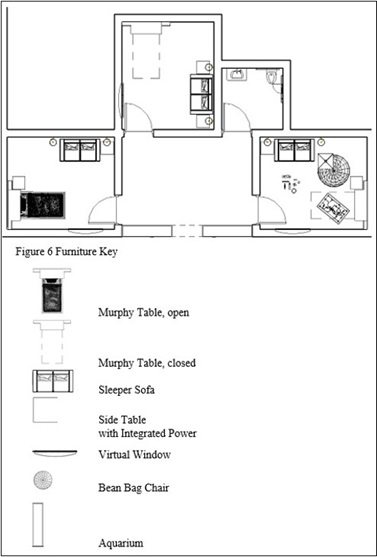
Figure 6: Private room’s detail plan.
In order to facilitate guests’ control over their wall color, a new type of paint was specified. This paint uses nano size cells that can inflate or deflate to refract light at different wavelengths to produce different colors. The advantage of this paint is that it can easily be controlled, and it does not produce its own light. Unlike an LED screen, this will allow very low light levels while still maintaining the guests’ preferred wall color [37].
Another aspect of new technology used to enhance the space is the use of virtual windows. These screens will allow any guest to select their own view, whether it would be nature or various park locations. Since this space will most likely need to be inserted into the back of a house service area, this will provide a way for access to the outside world within the private rooms. These windows will utilize a patent currently in use on the Hogwarts Express attraction at Universal Studios Orlando to achieve a greater sense of realism. These screens are curved in such a way that each guest can look ‘through’ them into the edge of the frame, further immersing themselves in the desired environment, as shown in figures 7 and 8 [38,39].
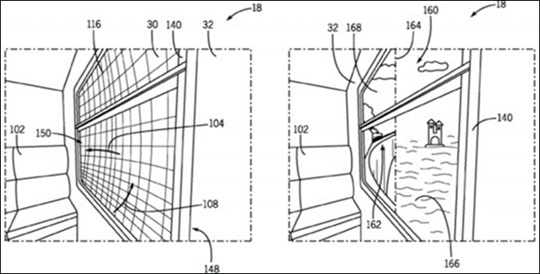
Figure 7: Patent images from universal studios orlando hogwarts express window technology [38].
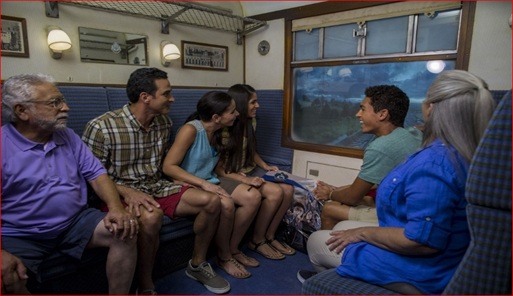
Figure 8: Universal studios orlando hogwarts express window technology in use [39].
When a guest requests a private room, they will initially be asked to select between three standard layouts and then be shown how to use the tablet to modify the space to meet their individual needs. The flexible design of the first two rooms lends itself to the needs of either people with autism or PTSD. The standard room layout has a Murphy bed that is folded up and concealed behind some faux cabinetry, calm mid-tone blue walls, and an exterior nature scene displayed on the virtual window. The second layout was adjusted to allow a place to sleep. The Murphy bed would be pulled down and made up, the walls would be dark blue, the lighting levels would be low, and window treatments would be pulled across the virtual window. The third standard layout targets the needs of people with autism who are hyposensitive and who seek additional stimulation. The room would have Pepto-Bismol pink walls, an active scene displayed on the virtual window, a bean bag, sensory toys, and an interactive fibre optic light fixture.
Fireworks viewing
Often the loud noises and crowds associated with fireworks and other nighttime spectaculars can be triggering for guests with autism and PTSD. Therefore, within this proposed design there are two new venues for viewing. Both will provide an alternative for these guests and their families.
The first viewing location will be on the second floor of the building and accessed by the elevator adjacent to the reception and interior garden. This will have three walls and a ceiling made from sound absorptive glass. The room will have two levels to increase the number of viewing opportunities, as shown in figure 9. The lower level can be accessed by guests in wheelchairs through the use of a Flex Step stair lift system. This system normally functions typically as stairs but can be converted into a wheelchair lift when necessary [40]. This system allows for accessibility while not taking up additional space that could be used for guests’ enjoyment. To aid in guests’ diverse needs, multiple seating options are available. These include various types of club chairs, sofas, benches, and wobble stools. The seating groups are arranged to accommodate multiple sizes of families and most seating types are easily moved to meet size and accessibility needs. While guests are using this space, a team member will be available to help them and to staff a service window. This area will provide light refreshments and noise cancelling headphones for those guests who need them. Next to this service area is an accessible restroom. 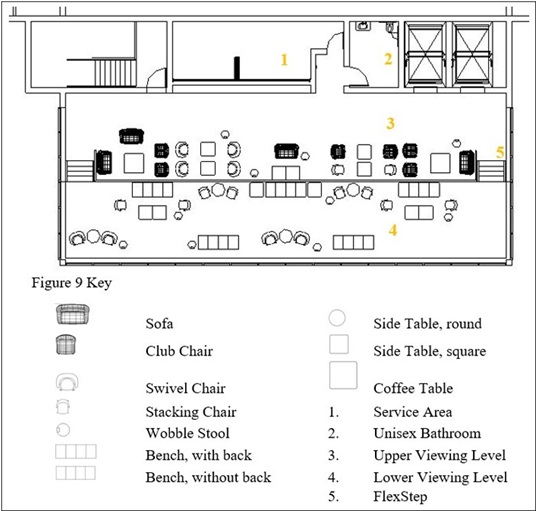
Figure 9: Level 2 furniture plan.
If guests find the sound on the second floor to be too noisy, they can elect to go to the second alternative firework viewing space. Accessed by elevator below the reception area, this theatre style venue will provide guests with maximum soundproofing while still being able to enjoy the show, as shown in figure 10. There are multiple levels of seating with cocooning comfortable club chairs. These are easily moved when a guest with a wheelchair wants to enjoy the space. A curved wall serves as a large screen for viewing a simulcast fireworks show where the soundtrack is funnelled into the space without the sound of explosions. This allows guests to enjoy the show while limiting their stress.
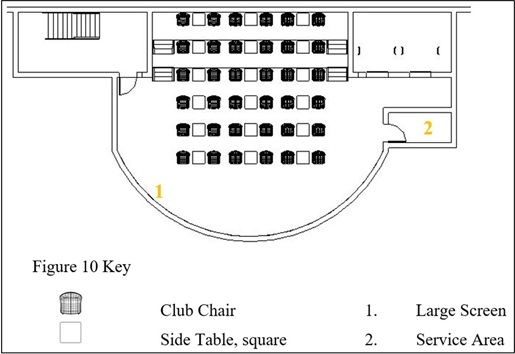
Figure 10: Level -1 furniture plan.
DISCUSSION
Limitations
Throughout this process, it quickly became evident that there is currently a lack of research related to interior designers’ and architects' evidence-based design recommendations for developing environments for people with PTSD. As Khanade et al., described it in 2018 [17], “Review of literature suggests that a well-defined, bounded, clear and extensive body of literature regarding mental health and urban design is absent.” Most design guidelines currently cite design standards and studies for neurotypical humans. The few studies that have been conducted on the influence of environment on people with PTSD all involve military veterans; however, they are not the only individuals that suffer from PTSD. This is an area for future research.
Another limitation is the theoretical nature of this design. If this proposed design is implemented within a theme park, it would benefit from a pilot testing of the various aspects of the design to see what elements are most successful and what elements need to be enhanced for physical implementation. This would involve focus groups of people with autism, PTSD, and their families, along with the team members involved in the operation of the space to create an environment that is universally beneficial.
CONCLUSION
While theme parks currently do make some accommodations for guests with autism and PTSD, these can be enhanced through the implementation of the proposed calm respite space. While theme park operators and designers have begun to address the needs of people with autism and PTSD, this proposal delves deeper to address the need for healthy engagement with these guests and the need for additional respite options. This proposal identifies and addresses environmental concerns that are not currently being addressed by the theme park industry. Through the adoption of many calming design factors including: views of and access to nature, natural or soft colors, opportunities for prospect and refuge, orderly spaces, privacy, and providing flexible choices for these guests, this proposed design can help achieve a sense of calm among the chaos typically associated with a theme park visit. This will allow these guests and their families a greater opportunity to participate in normalized activities, the ability to seek respite throughout the day, and enjoy the full value of their park day. The purpose of this writing is that these proposed designs can be adapted and implemented into new and existing theme parks to create flexible respite space tailored to better assist guests with autism, PTSD, and their families. The overstimulation that exists in theme parks can be challenging to people with autism and PTSD and so new solutions that begin to design beyond physical disabilities to address more hidden cognitive and psychological disabilities will assist these guests in feeling calmer, more in control and better able to connect with their families. The need for a calm, restorative environment as a component of their theme park experience has never been clearer.
REFERENCES
- Busch Gardens (n.d.). Tickets. Busch Gardens, Tampa, Florida.
- Disneyland Resort (n.d.). Theme park tickets. Disneyland Resort, Australia.
- Admission tickets.
- Sea World (n.d.). Tickets. SeaWorld Orlando, Florida, USA.
- Walt Disney World Resort (n.d.). Theme park tickets. Disneyland Resort, Australia.
- Hedge A (2015) Sensory sensitivity and the built environment. Lighting Design & Application.
- ADA National Network (2019) What is the Americans with Disabilities Act (ADA)? ADA National Network, Boston, USA.
- Benaron L (2009) Biographies of disease: Autism. Greenwood, Connecticut, USA.
- Mayo Clinic. Autism spectrum disorder.
- Ghazali R (2018) Preliminary study on sensory design for autism centre. Environment-Behaviour Proceedings Journal 3: 48-54.
- Mcallister K, Maguire B (2012) Design considerations for the autism spectrum disorder-friendly key stage 1 classroom. SfL Classroom Environments 27: 103-112.
- Steele K, Ahrentzen S (2016) At home with autism: Designing housing for the spectrum. Bristol University Press, Bristol, UK.
- Mayo Clinic. Post-traumatic stress disorder (PTSD).
- Finn M (2013) Posttraumatic understanding: The connections between posttraumatic stress and environmental design. Innovation Incubator, Atlanta, USA.
- Office of Construction & Facilities Management (2016) VA healing environment design guidelines 2016. U.S. Government Printing Office, Washington, USA.
- Augustin S (2009) Place advantage: Applied psychology for interior architecture. John Wiley & Sons, Inc, New Jersey, USA.
- Khanade K, Lawley S, Rodriguez-Paras C, Sasangohar F (2018) Investigating architectural and space design considerations for Post-Traumatic Stress Disorder (PTSD) patients. Proceedings of the Human Factors and Ergonomics Society Annual Meeting, USA.
- Walt Disney World Resort (2015) Walt Disney World Resort modified DAS message and FAQ. WDWR, Florida, USA.
- Sesame Place (n.d.). Autism resources. Sesame Place, Pennsylvania, USA.
- Spectrum Travel Social Story Videos (2017) A tour of Legoland Florida's quiet room for guest. Spectrum Travel Social Story Videos, New York, USA.
- International Board of Credentialing and Continuing Education Standards (n.d.). Certifying process. IBCCES, Florida, USA.
- Hosler A (2015) Museum access for all: Engaging children with autism spectrum disorders. In J. Decker (Ed.), Engagement and access: Innovative approaches for museums. Rowman & Littlefield, London, UK.
- Pribilski C (2014) Move it! Shake it! Dance & play it! parade - Walt Disney World.
- Gaines K, Bourne A, Pearson M, Kleibrink M (2016) Designing for autism spectrum disorders. Routledge, New York, USA.
- Walt Disney World Resort (2018) Planning a trip to the Walt Disney World Resort: A resource for guests with cognitive disabilities including autism spectrum disorder (ASD). WDWR, Florida, USA.
- Varonaon D, Raphael (2014) New queque sprinkles pixie dust on Peter Pan’s flight at Magic Kingdom.
- Dosen E, Ostwald M (2016) Evidence for prospect-refuge theory: A meta-analysis of the findings of environmental preference research. City Territory and Architecture 3: 4.
- Rapoport A (1990) The meaning of the built environment: A nonverbal communication approach. University of Arizona Press, Arizona, USA.
- Walker M (1990) The power of color. Avery Publishing Group, New York, USA.
- Edwards L, Torcellini P (2002) A literature review of the effects of natural light on building occupants. National Renewable Energy Laboratory, Colorado, USA.
- Kaplan R, Kaplan S, Ryan R (1998) With people in mind: Design and management of everyday nature. Island Press, Washington, USA.
- Sánchez P, Vázquez F, Serrano L (2011) Autism and the built environment, autism spectrum disorders - from genes to environment. IntechOpen.
- Williams M, Vouchilas G (2013) Residential design for families with children on the autism spectrum. Journal of Family & Consumer Sciences. 105: 33-43.
- Sachs N, Vincenta T (2011) Outdoor environments for children with autism and special needs. Implications 9: 1-7.
- Poulsen DV, Stigsdotter UK, Davidsen AS (2018) “That guy, is he really sick at all?” An analysis of how veterans with PTSD experience nature-based therapy. Healthcare (Basel) 6: 64.
- Kellert SR, Heerwagen J, Mador M (2011) Biophilic design: The theory, science, and practice, science, and practice of bringing buildings to life. John Wiley & Sons Ltd, Chichester, UK.
- Chen S (2018) Till decorating do us part: Chinese team develops chameleon-like house paint that changes colour to keep the whole family happy. South China Morning Post.
- Bilbao R (2017) New Universal patent aims to enhance Harry Potter rides. Orlando Business Journal.
- Strickland T (2001) The Hogwarts Express at Universal Orlando Resort. Orlando Informer, Florida, USA.
- FlexStep by Liftup.
Citation: Donarski K, Wood-Nartker J (2020) Calm in Chaos: Creating Refuge Spaces in the Theme Park Setting for People with Autism Spectrum Disorder and Post-Traumatic Stress Disorder. J Phys Med Rehabil Disabil 6: 046.
Copyright: © 2020 Karen Donarski, et al. This is an open-access article distributed under the terms of the Creative Commons Attribution License, which permits unrestricted use, distribution, and reproduction in any medium, provided the original author and source are credited.

